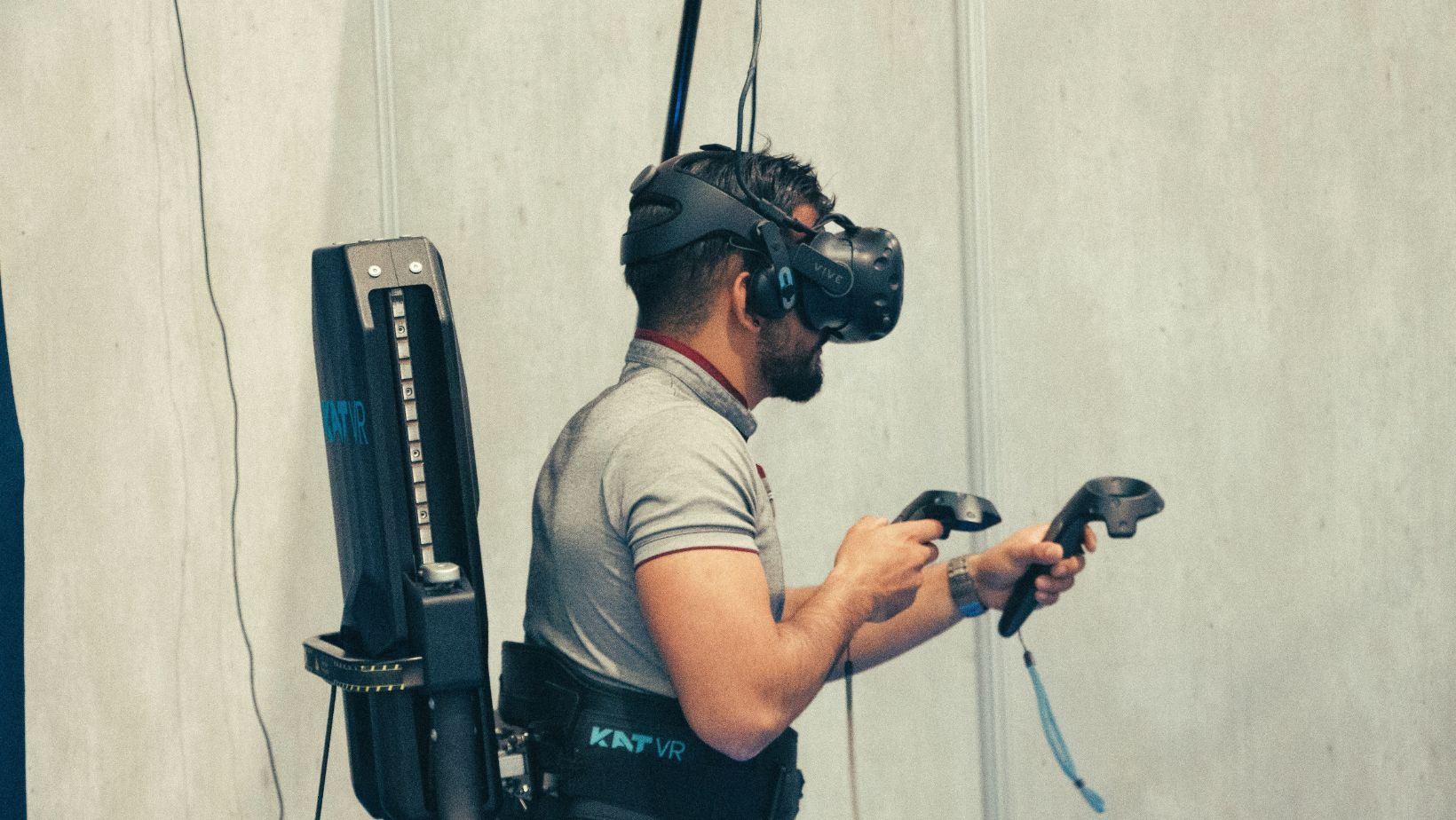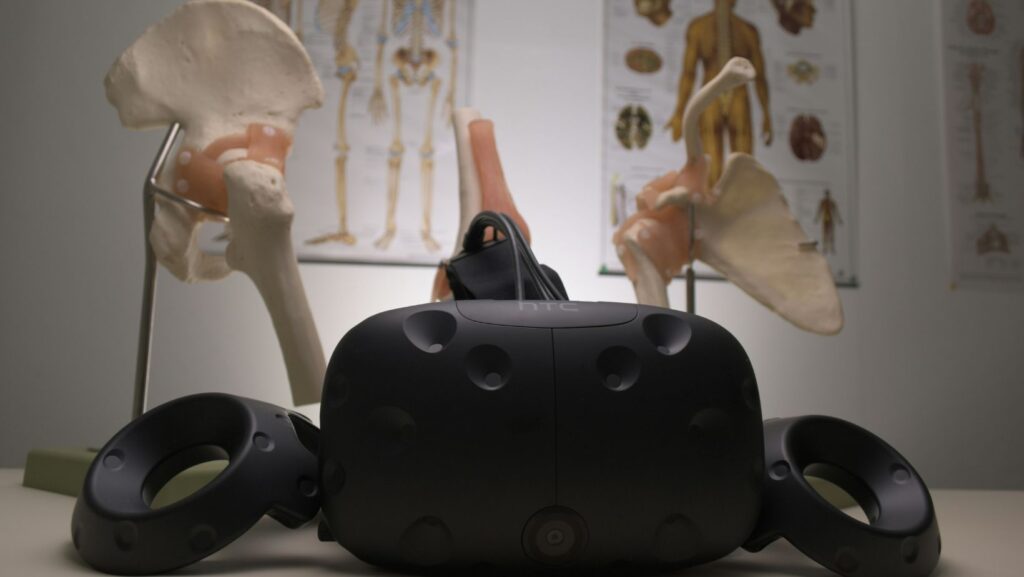Picture Lionel Messi with a torn ACL. Or LeBron James with a high ankle sprain. What if their recovery wasn’t limited to ice baths and physical therapy but rather to a fully immersive VR environment where they could preemptively step back onto the field or court and visualize every movement they needed to make? That’s not science fiction; it’s happening right now. VR is changing the game when it comes to rehabilitation, allowing athletes to heal quicker, train efficiently, and return even more powerfully. Let’s look at how modern VR technology is changing recovery for athletes around the world.
VR in Modern Sports Recovery
Professional sports teams are incorporating VR into the rehabilitation programs of injured players and their management systems. The Dallas Cowboys are utilizing STRIVR, a high-tech immersive VR system made for training quarterbacks, to boost morale and keep injured players physically and mentally active. This, along with many other teams that you can bet on after MelBet download, continues to use cutting-edge technology to improve their game and achieve better results. For example, many use NeuroTrainer, a VR-enabled platform that leverages neuroscience, is used at the UFC Performance Institute to assist fighters recovering from concussions.
Other hospitals and clinics, like the Stanford Sports Medicine Center and the Mayo Clinic, have started to incorporate VR into their rehabilitation services. Research conducted by the Cleveland Clinic showed that athletes utilizing VR-based therapy return to their active lifestyles 30% faster than those using traditional rehab techniques. With platforms like COGNIVIVE designing interactive exercises specific to each athlete’s injury, these athletes have access to a groundbreaking method of regaining strength, mobility, and confidence.
How Virtual Reality Aids Rehabilitation
Rather than simply replacing traditional rehabilitation procedures, Virtual Reality (VR) makes them more effective. Here are a few ways it enhances recovery speed and efficacy:
- Neuroplasticity Acceleration: Reflexion and SyncThink help athletes relearn how to control injured muscles, lessening recovery time.
- Real-Time Movement Analysis: HoloLens PT and XRHealth monitor biomechanics to ensure ideal movement execution for every exercise.
- Adaptive Resistance & Load Management: VR resistance training dynamically modifies the difficulty of the tasks based on actual performance metrics.
- Cognitive Engagement & Motivation: MindMaze and Rezzil transform rehabilitation into a contest, turning every session into a fun and competitive experience.
With these improvements, recovery is not just about returning to functionality; rather, it is enhanced to ensure that the user comes back stronger than before. And while the athletes are recovering and reaching a new level, fans continue to follow their successes, enjoying the latest news on Facebook MelBet. Here, you can always find memes, insider information, event schedules, and the hottest moments from the world of sports. This is a place where fans unite to not only follow their favorite teams but also share their predictions and emotions with like-minded people!
Enhancing Muscle Memory with VR
Muscle memory plays an important role in achieving peak performance, and VR helps develop it faster by replicating real game scenarios. Rather than focusing on isolating exercises, platforms such as STRIVR and REACT Neuro construct movement patterns that involve the entire body to simulate actual play.
Let’s take ACL recovery. Research at Johns Hopkins University has shown that VR-based neuromuscular training increases reaction times by 25%, significantly lowering the chances of re-injury. STRIVR cognitive training modules are used by NBA teams like the Golden State Warriors so that players not only recover but also regain confidence in their movements before re-entering the court. This is not merely rehab; it is performance optimization.
Pain Management Through Immersive Tech
Pain is one of the most significant rehabilitation roadblocks, but VR can help with distraction-based pain management. Stanford University has shown that VR therapy can reduce perceived pain by 35%, allowing athletes to more effectively push their limits during rehabilitation.
Let’s see how VR is revolutionizing pain management in sports rehabilitation:
| Technique | Impact | Example |
| Immersive Distraction | Reduces pain perception by 35% | SnowWorld VR for burn victims |
| Cognitive Load Therapy | Shifts focus from pain to task engagement | VR rehab for post-op athletes |
| Biofeedback Integration | Helps athletes control pain responses | NeuroTrainer’s EEG-driven feedback |
| VR-Assisted Meditation | Lowers stress and cortisol levels | Healium VR for stress reduction |
| Real-Time Motion Capture | Prevents compensation-based pain patterns | Reflexion for post-concussion rehab |
VR for Balance and Coordination Training
Injuries require the individual to retrain the body’s balance and coordination capabilities. Virtual reality surpasses traditional methods because it uses fluid and unpredictable settings that foster reflexes and proprioception.
University of Pittsburgh studies demonstrate that soccer players recovering from ankle injuries improved stability through VR-based training 40% faster. CAREN Systems and Oculus VR Balance Therapy recreate in-game movements that require athletes to react naturally. This is particularly important for athletes such as gymnasts, football players, and basketball players who require precision footwork.
Real-Time Feedback for Faster Recovery
Everything in rehabilitation requires precision. Advances in technology mean that virtual reality systems provide real-time biomechanical feedback on the spot to ensure accurate movement execution.
KINECT Rehab and SWORD Phoenix monitor joint angles, weight distribution, and overall movement efficiency. Harvard Medical School has demonstrated that athletes employing VR-based motion analysis increased rehab efficiency by 28% and reduced chances of sustaining new injuries. This kind of feedback wasn’t feasible a decade ago, but it is now the frontier of sports medicine!
Psychological Benefits of VR Rehab
Injuries affect both mind and body. Athletes have greater confidence and motivation throughout the rehabilitation process with the use of VR technology:
- Rebuilding Confidence: Virtual in-game practice allows athletes to get accustomed to high-pressure situations during the game.
- Stress Relief: Cortisol is a stress hormone, and VR applications such as FlowVR and TRIPP VR reduce cortisol levels, thereby relaxing rehabilitation.
- Cognitive Resilience Training: Post-concussion recovery is supported by SyncThink, which improves reaction time and attention span.
- Active Participation Gamification: VR rehabilitation motivates athletes as they turn specific activities into competitions, creating a goal-oriented environment that encourages consistent participation.
Thanks to these mental health advantages, athletes are not only able to physically recuperate but also able to mentally recuperate stronger than before.
Customizing Rehabilitation with AI & VR
With each passing day, technology advances, and AI is customizing every aspect of VR rehab. MindMaze and Reflexion are examples of AI-driven VR, which combines static and dynamic systems, adjusting freely based on an athlete’s progress.
AI technology, for instance, can be found in XRHealth, which scans an athlete’s movements for tiny differences and even the slightest changes in movement. The AI can then make alterations in real time to avoid creating compensatory movements. In some cases, rehab times can be cut by nearly 40% due to this optimization. With this precision, it is clear that VR works to build modern medicine around sport!
Beyond Recovery: VR is Changing the Game Forever
VR isn’t just another rehabilitation tool; it’s rewriting the entire playbook. From elite soccer clubs such as Manchester City to Olympic training facilities, this technology is transforming recovery, injury prevention, and performance enhancement. With AI-powered customizations, real-time motion capture, and virtual distraction techniques, the future of sports medicine is not just bright: it’s virtual. One question remains: how rapidly will the rest of the sporting world assimilate?



